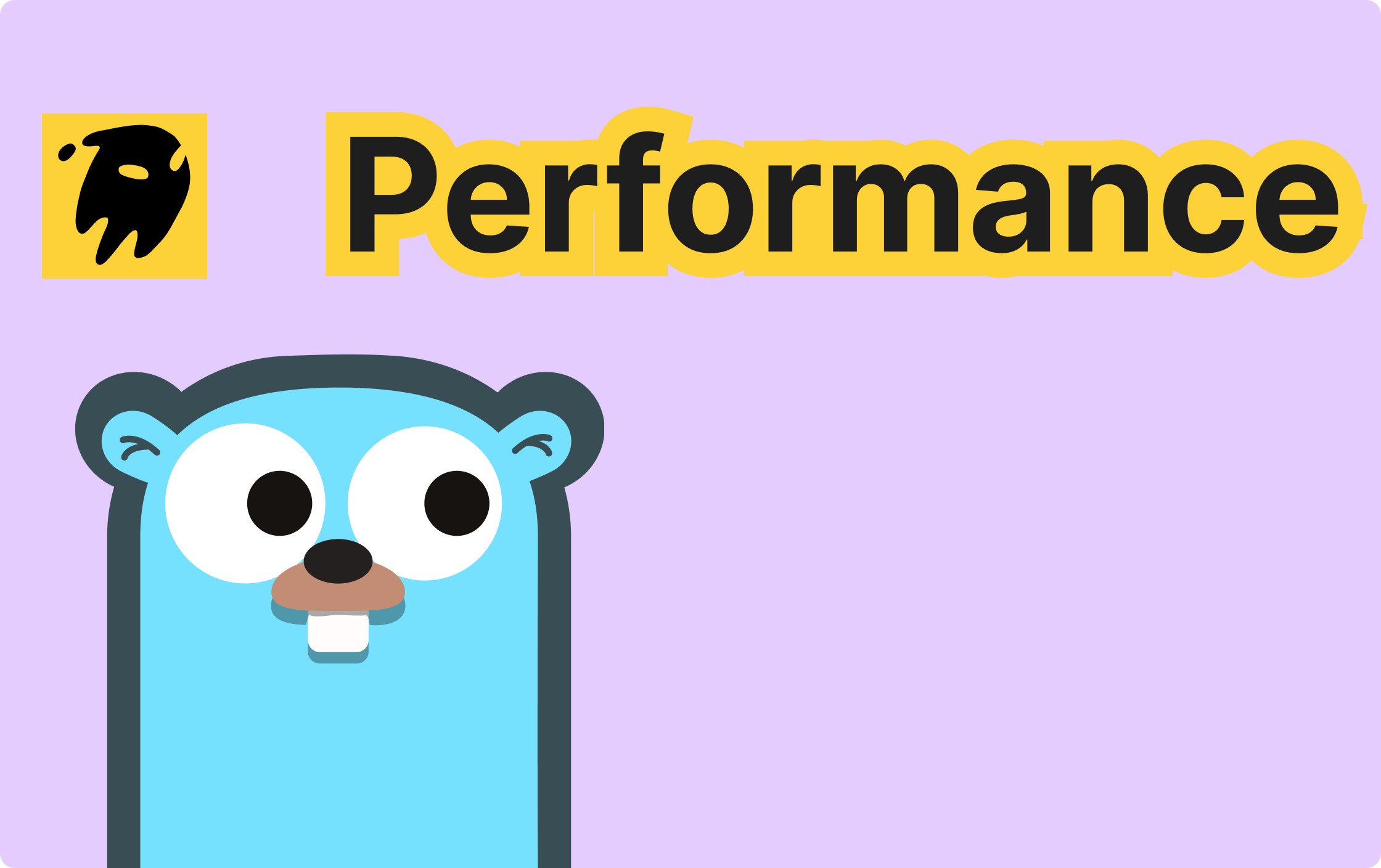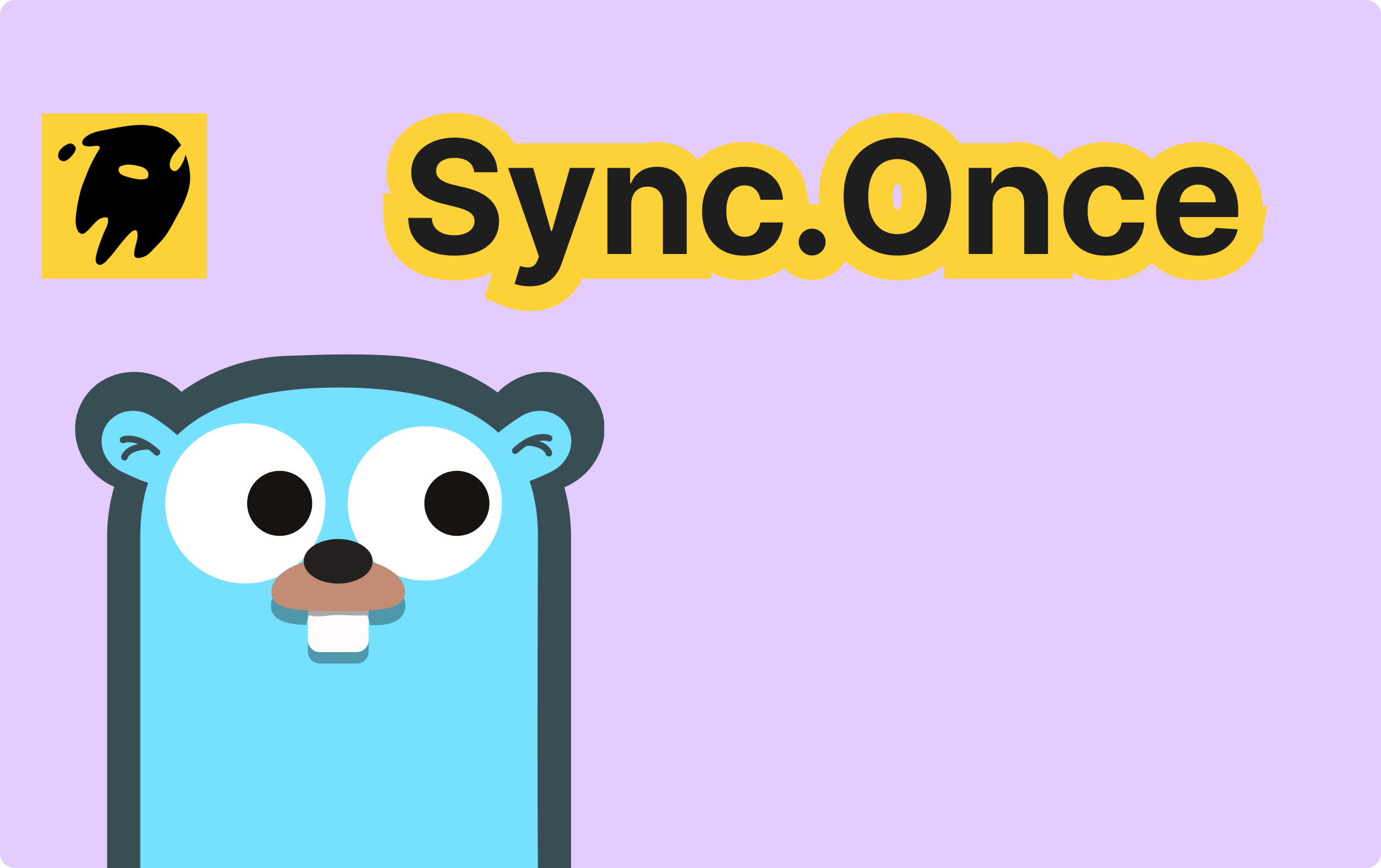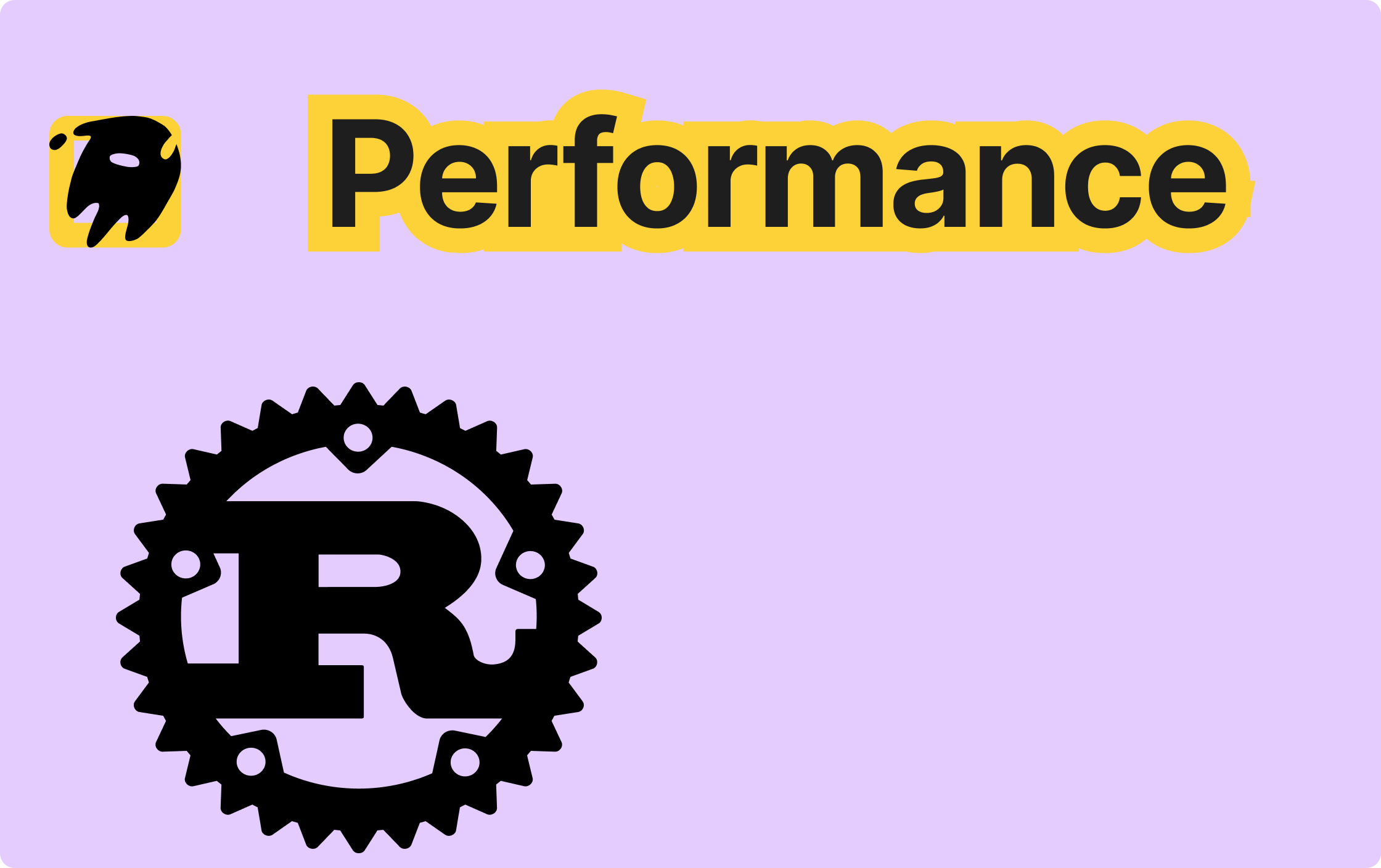Go in der Produktion: 20 Unbedingt Bekannte Tipps zur Leistungsoptimierung
Wenhao Wang
Dev Intern · Leapcell

Go Performance Tuning in Practice: 20 Core Lessons from Production
As an engineer who has spent years building backend services with Go, I'm keenly aware of the language's immense performance potential. But potential needs to be properly unlocked. There's a world of difference between merely implementing a feature and building a system that runs stably and efficiently under high concurrency. Poor coding habits and a disregard for underlying mechanics can easily negate the performance advantages Go offers at the language level.
This article is not a collection of abstract theories. I'm going to share 20 performance optimization tips that have been repeatedly validated in production environments. They are a summary of practices that have proven effective, learned from years of development, tuning, and mistakes. I'll dive into the "why" behind each recommendation and provide practical code examples, aiming to build a clear, actionable framework for Go performance optimization.
The Philosophy of Optimization: Principles First
Before you change a single line of code, you must establish the right optimization methodology. Otherwise, all your efforts could be misguided.
1. The First Rule of Optimization: Measure, Don't Guess
Why: Any optimization not backed by data is a cardinal sin of engineering—it's like fumbling in the dark. An engineer's intuition about bottlenecks is notoriously unreliable. "Optimizing" down the wrong path not only wastes time but also introduces unnecessary complexity and can even create new bugs. Go's built-in pprof toolset is the most powerful weapon in our arsenal and the only reliable starting point for performance analysis.
How to do it:
Using the net/http/pprof package, you can expose a pprof endpoint in your HTTP service with minimal effort to analyze its runtime state in real-time.
- CPU Profile: Pinpoints the code paths (hot spots) that consume the most CPU time.
- Memory Profile: Analyzes the program's memory allocation and retention, helping to hunt down unreasonable memory usage.
- Block Profile: Traces the synchronization primitives (locks, channel waits) that cause goroutines to block.
- Mutex Profile: Specifically used to analyze and locate contention on mutexes.
Example:
Importing the pprof package in your main function is all it takes to expose the analysis endpoints.
import ( "log" "net/http" _ "net/http/pprof" // Critical: anonymous import to register pprof handlers ) func main() { // ... your application logic ... go func() { // Start the pprof server in a separate goroutine // It's generally not recommended to expose this to the public internet in production log.Println(http.ListenAndServe("localhost:6060", nil)) }() // ... }
Once the service is running, use the go tool pprof command to collect and analyze data. For instance, to collect a 30-second CPU profile:
go tool pprof http://localhost:6060/debug/pprof/profile?seconds=30
The Core Principle: Measure, don't guess. This is the iron law of performance work.
2. Establish Your Metrics: Write Effective Benchmarks
Why: While pprof helps us identify macro-level bottlenecks, go test -bench is our microscope for validating micro-level optimizations. The impact of any change to a specific function or algorithm must be quantified with a benchmark.
How to do it:
Benchmark functions are prefixed with Benchmark and accept a *testing.B parameter. The code to be tested runs inside a for i := 0; i < b.N; i++ loop, where b.N is dynamically adjusted by the testing framework to achieve a statistically stable measurement.
Example: Let's compare the performance of two string concatenation methods.
// in string_concat_test.go package main import ( "strings" "testing" ) var testData = []string{"a", "b", "c", "d", "e", "f", "g"} func BenchmarkStringPlus(b *testing.B) { b.ReportAllocs() // Reports memory allocations per operation for i := 0; i < b.N; i++ { var result string for _, s := range testData { result += s } } } func BenchmarkStringBuilder(b *testing.B) { b.ReportAllocs() for i := 0; i < b.N; i++ { var builder strings.Builder for _, s := range testData { builder.WriteString(s) } _ = builder.String() } }
The data makes it clear: strings.Builder has an overwhelming advantage in both performance and memory efficiency.
Part Two: Taming Memory Allocation
Go's garbage collector is already highly efficient, but its workload is directly proportional to the frequency and size of memory allocations. Controlling allocations is one of the most effective optimization strategies.
3. Pre-allocate Capacity for Slices and Maps
Why: Slices and maps automatically grow when their capacity is exceeded. This process involves allocating a new, larger block of memory, copying the old data over, and then freeing the old memory—a very expensive sequence of operations. If you can predict the approximate number of elements upfront, you can allocate enough capacity in one go and eliminate this recurring overhead entirely.
How to do it:
Use the second argument for maps or the third argument for slices with make to specify the initial capacity.
const count = 10000 // Bad practice: append() will trigger multiple reallocations s := make([]int, 0) for i := 0; i < count; i++ { s = append(s, i) } // Recommended practice: Allocate enough capacity at once s := make([]int, 0, count) for i := 0; i < count; i++ { s = append(s, i) } // The same logic applies to maps m := make(map[int]string, count)
4. Reuse Frequently Allocated Objects with sync.Pool
Why: In high-frequency scenarios (like handling network requests), you often create a large number of short-lived temporary objects. sync.Pool provides a high-performance mechanism for object reuse, which can significantly reduce memory allocation pressure and the resulting GC overhead in these cases.
How to do it:
Use Get() to retrieve an object from the pool. If the pool is empty, it calls the New function to create a new one. Use Put() to return an object to the pool.
Example:
Reusing a bytes.Buffer for handling requests.
import ( "bytes" "sync" ) var bufferPool = sync.Pool{ New: func() interface{} { return new(bytes.Buffer) }, } func ProcessRequest(data []byte) { buffer := bufferPool.Get().(*bytes.Buffer) defer bufferPool.Put(buffer) // defer ensures the object is always returned buffer.Reset() // Reset the object's state before reuse // ... use the buffer ... buffer.Write(data) }
Note: Objects in a sync.Pool can be garbage collected at any time without notice. It is only suitable for storing stateless, temporary objects that can be recreated on demand.
5. String Concatenation: strings.Builder is the Top Choice
Why: Strings in Go are immutable. Concatenating with + or += allocates a new string object for the result every single time, creating a huge amount of unnecessary garbage. strings.Builder uses a mutable []byte buffer internally, so the concatenation process doesn't generate intermediate garbage. A single allocation occurs only at the end when the String() method is called.
Example: Refer to the benchmark in tip #2.
6. Beware of Memory Leaks from Sub-slicing a Large Slice
Why: This is a subtle but common memory leak trap. When you create a small slice from a large one (e.g., small := large[:10]), both small and large share the same underlying array. As long as small is in use, the giant underlying array cannot be garbage collected, even if the large variable itself is no longer accessible.
How to do it:
If you need to hold onto a small part of a large slice for a long time, you must explicitly copy the data into a new slice. This severs the link to the original underlying array.
Example:
// Potential memory leak func getSubSlice(data []byte) []byte { // The returned slice still references the entire underlying array of data return data[:10] } // The correct approach func getSubSliceCorrectly(data []byte) []byte { sub := data[:10] result := make([]byte, 10) copy(result, sub) // Copy the data to new memory // result no longer has any association with the original data return result }
Rule of thumb: When you extract a small piece of a large object and need to hold it long-term, copy it.
7. The Trade-off Between Pointers and Values
Why: All argument passing in Go is by value. Passing a large struct means copying the entire struct on the stack, which can be expensive. Passing a pointer, however, only copies the memory address (typically 8 bytes on a 64-bit system), which is extremely efficient.
How to do it: For large structs, or for functions that need to modify the struct's state, always pass by pointer.
type BigStruct struct { data [1024 * 10]byte // A 10KB struct } // Inefficient: copies 10KB of data func ProcessByValue(s BigStruct) { /* ... */ } // Efficient: copies an 8-byte pointer func ProcessByPointer(s *BigStruct) { /* ... */ }
The other side of the coin: For very small structs (e.g., containing just a few ints), passing by value might be faster because it avoids the overhead of pointer indirection. The final verdict should always come from a benchmark.
Part Three: Mastering Concurrency
Concurrency is Go's superpower, but its misuse can equally lead to performance degradation.
8. Setting GOMAXPROCS
Why: GOMAXPROCS determines the number of OS threads that the Go scheduler can use simultaneously. Since Go 1.5, the default value has been the number of CPU cores, which is optimal for most CPU-bound scenarios. However, for I/O-bound applications or when deployed in constrained container environments (like Kubernetes), its setting deserves attention.
How to do it:
In most cases, you don't need to change it. For containerized deployments, it is highly recommended to use the uber-go/automaxprocs library. It automatically sets GOMAXPROCS based on the cgroup CPU limit, preventing resource waste and scheduling problems.
9. Decouple with Buffered Channels
Why: Unbuffered channels (make(chan T)) are synchronous; the sender and receiver must be ready at the same time. This can often become a performance bottleneck. A buffered channel (make(chan T, N)) allows the sender to complete its operation without blocking as long as the buffer isn't full. This serves to absorb bursts and decouple the producer from the consumer.
How to do it: Set a reasonable buffer size based on the speed difference between your producer and consumer, as well as the system's tolerance for latency.
// Blocking model: A worker must be free for a task to be sent jobs := make(chan int) // Decoupled model: Tasks can sit in the buffer, waiting for a worker jobs := make(chan int, 100)
10. sync.WaitGroup: The Standard Way to Await a Group of Goroutines
Why: When you need to run a group of concurrent tasks and wait for all of them to finish, sync.WaitGroup is the most standard and efficient synchronization primitive. It's strictly forbidden to use time.Sleep for waiting, and you shouldn't implement complex counters with channels for this purpose.
How to do it:
Add(delta) increments the counter, Done() decrements it, and Wait() blocks until the counter is zero.
import "sync" func main() { var wg sync.WaitGroup for i := 0; i < 5; i++ { wg.Add(1) go func() { defer wg.Done() // ... perform task ... }() } wg.Wait() // Wait for all the goroutines above to complete }
11. Reducing Lock Contention Under High Concurrency
Why: sync.Mutex is fundamental for protecting shared state, but under high QPS, fierce contention for the same lock can turn your parallel program into a serial one, causing throughput to plummet. pprof's mutex profile is the right tool to identify lock contention.
How to do it:
- Reduce lock granularity: Lock only the minimal data unit that needs protection, not a huge struct.
- Use
sync.RWMutex: In read-heavy scenarios, a read-write lock allows multiple readers to proceed in parallel, dramatically improving throughput. - Use the
sync/atomicpackage: For simple counters or flags, atomic operations are far more lightweight than mutexes. - Sharding: Break a large map into several smaller maps, each protected by its own lock, to distribute contention.
12. Worker Pools: An Effective Pattern for Controlling Concurrency
Why: Creating a new goroutine for every single task is a dangerous anti-pattern that can instantly exhaust system memory and CPU resources. The worker pool pattern effectively controls the level of concurrency by using a fixed number of worker goroutines to consume tasks, thereby protecting the system.
How to do it: This is a fundamental pattern in Go concurrency, implemented with a task channel and a fixed number of worker goroutines.
func worker(jobs <-chan int, results chan<- int) { for j := range jobs { // ... process job j ... results <- j * 2 } } func main() { jobs := make(chan int, 100) results := make(chan int, 100) // Start 5 workers for w := 1; w <= 5; w++ { go worker(jobs, results) } // ... send tasks to the jobs channel ... close(jobs) // ... collect results from the results channel ... }
Part Four: Micro-choices in Data Structures and Algorithms
13. Use map[key]struct{} for Sets
Why: When implementing a set in Go, map[string]struct{} is superior to map[string]bool. An empty struct (struct{}{}) is a zero-width type that occupies no memory. Therefore, map[key]struct{} provides the functionality of a set while being significantly more memory-efficient.
Example:
// More memory efficient set := make(map[string]struct{}) set["apple"] = struct{}{} set["banana"] = struct{}{} // Check for existence if _, ok := set["apple"]; ok { // exists }
14. Avoid Unnecessary Calculations in Hot Loops
Why: This is a basic principle of good programming, but its impact is magnified thousands of times in a "hot loop" identified by pprof. Any calculation whose result is constant within a loop should be moved outside of it.
Example:
items := []string{"a", "b", "c"} // Bad practice: len(items) is called in every iteration for i := 0; i < len(items); i++ { /* ... */ } // Recommended practice: Pre-calculate the length length := len(items) for i := 0; i < length; i++ { /* ... */ }
15. Understand the Runtime Cost of Interfaces
Why: Interfaces are at the heart of Go's polymorphism, but they are not free. Calling a method on an interface value involves dynamic dispatch, where the runtime has to look up the concrete type's method, which is slower than a direct static call. Furthermore, assigning a concrete value to an interface type often triggers a memory allocation on the heap (an "escape").
How to do it:
In performance-critical code paths where the type is fixed, you should avoid interfaces and use concrete types directly. If pprof shows that runtime.convT2I or runtime.assertI2T are consuming significant CPU, that's a strong signal to refactor.
Part Five: Leveraging the Power of the Toolchain
16. Reduce Binary Size for Production Builds
Why: By default, Go embeds a symbol table and DWARF debugging information into the binary. This is useful during development but is redundant for production deployments. Removing them can significantly reduce the binary size, which speeds up container image builds and distribution.
How to do it:
go build -ldflags="-s -w" myapp.go
-s: Removes the symbol table.
-w: Removes the DWARF debugging information.
17. Understand the Compiler's Escape Analysis
Why: Whether a variable is allocated on the stack or the heap has a huge impact on performance. Stack allocation is nearly free, whereas heap allocation involves the garbage collector. The compiler decides a variable's location via escape analysis. Understanding its output helps you write code that results in fewer heap allocations.
How to do it:
Use the go build -gcflags="-m" command, and the compiler will print its escape analysis decisions.
func getInt() *int { i := 10 return &i // &i "escapes to heap" }
Seeing the escapes to heap output tells you exactly where a heap allocation occurred.
18. Evaluate the Cost of cgo Calls
Why: cgo is the bridge between the Go and C worlds, but crossing that bridge is expensive. Every call between Go and C incurs significant thread context-switching overhead, which can severely impact the Go scheduler's performance.
How to do it:
- Whenever possible, find a pure Go solution.
- If you must use
cgo, minimize the number of calls. It's far better to batch data and make a single call than to call a C function repeatedly inside a loop.
19. Embrace PGO: Profile-Guided Optimization
Why: PGO is a heavyweight optimization feature introduced in Go 1.21. It allows the compiler to use a real-world profile file generated by pprof to make more targeted optimizations, such as smarter function inlining. Official benchmarks show it can bring a 2-7% performance improvement.
How to do it:
- Collect a CPU profile from your production environment:
curl -o cpu.pprof "..." - Compile your application using the profile file:
go build -pgo=cpu.pprof -o myapp_pgo myapp.go
20. Keep Your Go Version Updated
Why: This is the easiest performance win. The Go core team makes extensive optimizations to the compiler, runtime (especially the GC), and standard library in every release. Upgrading your Go version is how you get the benefits of their work for free.
Writing high-performance Go code is a systematic engineering effort. It requires not only familiarity with the syntax but also a deep understanding of the memory model, concurrency scheduler, and toolchain.
Leapcell: The Best of Serverless Web Hosting
Finally, I recommend the most suitable platform for deploying Go services: Leapcell

🚀 Build with Your Favorite Language
Develop effortlessly in JavaScript, Python, Go, or Rust.
🌍 Deploy Unlimited Projects for Free
Only pay for what you use—no requests, no charges.
⚡ Pay-as-You-Go, No Hidden Costs
No idle fees, just seamless scalability.

🔹 Follow us on Twitter: @LeapcellHQ


